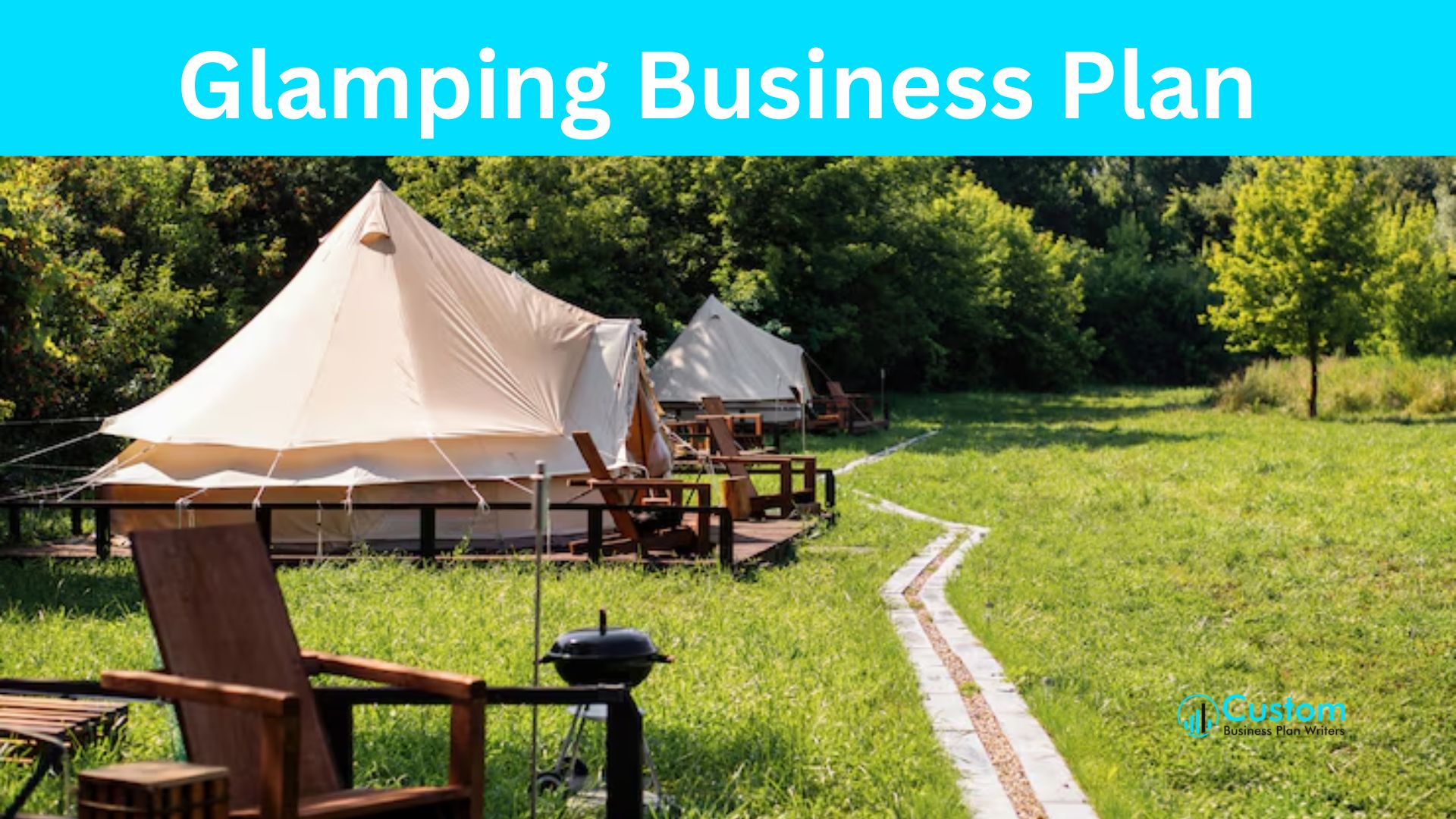Glamping Business Plan + Template
December 04, 2024 · 6 min read

Glamping, short for “glamorous camping,” merges the beauty of the outdoors with modern-day comforts, offering a unique travel experience. It caters to travelers who love nature but want to avoid the inconvenience of traditional camping.
Glamping accommodations include luxury tents, treehouses, domes, and eco-friendly cabins, often equipped with amenities like comfortable beds, private bathrooms, and even Wi-Fi. This travel trend has gained significant popularity among millennials, couples, families, and eco-conscious travelers seeking sustainable tourism experiences.
With the rise of experiential travel, glamping provides a balance between adventure and relaxation. The industry is thriving, fueled by social media exposure and growing demand for unique stays.
For entrepreneurs, glamping offers an exciting business opportunity in a niche market with high growth potential. Before diving into this business, it’s important to understand how glamping aligns with current travel trends and what travelers expect from such accommodations.
Writing a solid business plan is essential for capturing these opportunities and ensuring long-term success.
Why a Business Plan is Essential for Glamping Ventures
A business plan is more than just a document; it’s a strategic tool that guides your glamping venture from conception to success. It helps you define your vision and break it down into actionable steps, ensuring every aspect of your business is well planned.
By outlining your goals, target audience, and revenue streams, a business plan keeps you focused and organized. For funding purposes, it serves as a professional presentation to attract investors or secure loans by demonstrating the viability of your business.
It also identifies potential challenges, such as seasonal demand fluctuations, and offers solutions to mitigate risks. A business plan helps you evaluate competitors and carve out your unique niche in the growing glamping market.
For daily operations, it acts as a reference point, ensuring your business stays aligned with its objectives. In short, a detailed and well researched business plan is the foundation for building a profitable and sustainable glamping business.
Key Components of a Glamping Business Plan
A successful glamping business plan comprises several essential sections that guide your operations and growth. Each section of the business plan contributes to creating a comprehensive roadmap that sets your glamping business on a path to excellence.
Executive Summary
The executive summary provides a snapshot of the entire business plan and should be written last to ensure it captures all key points. It includes the business concept, mission statement, and primary objectives, giving readers a clear understanding of the venture’s purpose.
This section should briefly highlight the accommodations offered, such as luxury tents or yurts, and their appeal to the target market. It should also identify unique selling propositions that set the business apart, such as eco-friendly features or high-end amenities.
The tone should be concise and engaging, enticing stakeholders to delve deeper into the plan. The executive summary is typically no longer than one or two pages and is designed to leave a strong first impression.
Company Description
This section focuses on the legal structure of the business, such as a sole proprietorship, partnership, or LLC, and details the operational location. It should describe the accommodations provided, such as treehouses, domes, or safari tents, and explain the inspiration behind starting the business.
The company’s description should convey the brand’s identity and the experience it aims to deliver to guests, such as connecting with nature while enjoying luxurious comforts.
This section may also touch on the business’s history, if applicable, and its vision for the future. The writing should be clear and professional, offering an authentic insight into the business’s ethos.
Market Analysis
The market analysis requires in-depth research on the glamping industry, including trends, market size, and target demographics. It should explain the customer base, such as eco-conscious travelers or families seeking unique vacation experiences, and analyze their preferences and behaviors.
Competitor analysis is also essential, identifying their strengths, weaknesses, and market position to find gaps your business can fill. This section should include data and statistics to support claims, such as growth projections for the glamping market.
The tone should be analytical and data-driven, showing a clear understanding of the industry landscape.
Organization and Management
This section outlines the organizational structure, detailing ownership and the management team. It should describe the roles and responsibilities of each key team member, highlighting their qualifications and contributions to the business.
If the venture is led by a single owner, this section can include plans for future team expansion. The organizational chart should clearly show the hierarchy and reporting relationships.
Writing should focus on transparency and professionalism, demonstrating the team’s capability to manage the business effectively.
Services Offered
This section describes the accommodations and amenities provided, emphasizing how they enhance the guest experience. Details should include lodging options, such as luxury tents or cabins, and additional features like private bathrooms, dining services, or recreational activities.
It should also highlight any unique offerings, such as wellness programs or environmental friendly initiatives. Writing should be descriptive yet simple, ensuring that readers can visualize the services and understand their value.
Marketing and Sales Strategy
This section explains how the business plans to attract and retain customers using various marketing channels. Strategies should include digital marketing efforts, such as SEO, social media advertising, and partnerships with travel agencies.
It should also describe the pricing strategy, ensuring it aligns with the target market’s expectations while remaining competitive. Sales tactics, like early-bird discounts or package deals, should also be included.
Writing should focus on actionable and measurable strategies that demonstrate a clear path to achieving occupancy and revenue goals.
Operational Plan
The operational plan details the daily processes that keep the business running smoothly. It should describe how bookings are managed, how accommodations are maintained, and how guest services are delivered.
This section should also include supplier relationships, outlining how resources like food, linens, and safe materials are sourced. Writing should emphasize efficiency and quality, showing that the business has robust systems in place for smooth operations.
Financial Plan
The financial plan outlines the startup costs, ongoing expenses, and revenue projections for the business. It should include a detailed breakdown of initial investments, such as infrastructure, marketing, and accommodations.
Revenue forecasts should account for seasonal demand and additional income streams like dining or recreational activities. A break-even analysis, cash flow projections, and profit and loss statements should also be included.
Writing should be factual and supported by data, showing the business’s potential for profitability and financial stability.
Appendix
The appendix provides supporting materials that add depth to the business plan. These can include legal documents, market research data, architectural designs, and resumes of key team members.
Each document should be labeled and referenced in the main sections for easy navigation. Writing should remain professional and organized, ensuring the appendix complements the business plan without overwhelming the reader.
Are There Professional Glamping Business Plan writers?
Yes, there are professional glamping business plan writers who specialize in creating custom business plans for glamping ventures. These experts understand the unique aspects of the glamping market, such as trends, target audiences, and operational requirements, allowing them to develop comprehensive and effective plans.
They provide detailed strategies, including market analysis, financial projections, and marketing tactics, to position your business for success. Professional writers save time and ensure the plan meets industry standards, helping attract investors or secure funding.
Utilizing their expertise can significantly enhance the quality of your business plan, increasing the likelihood of long-term success.


